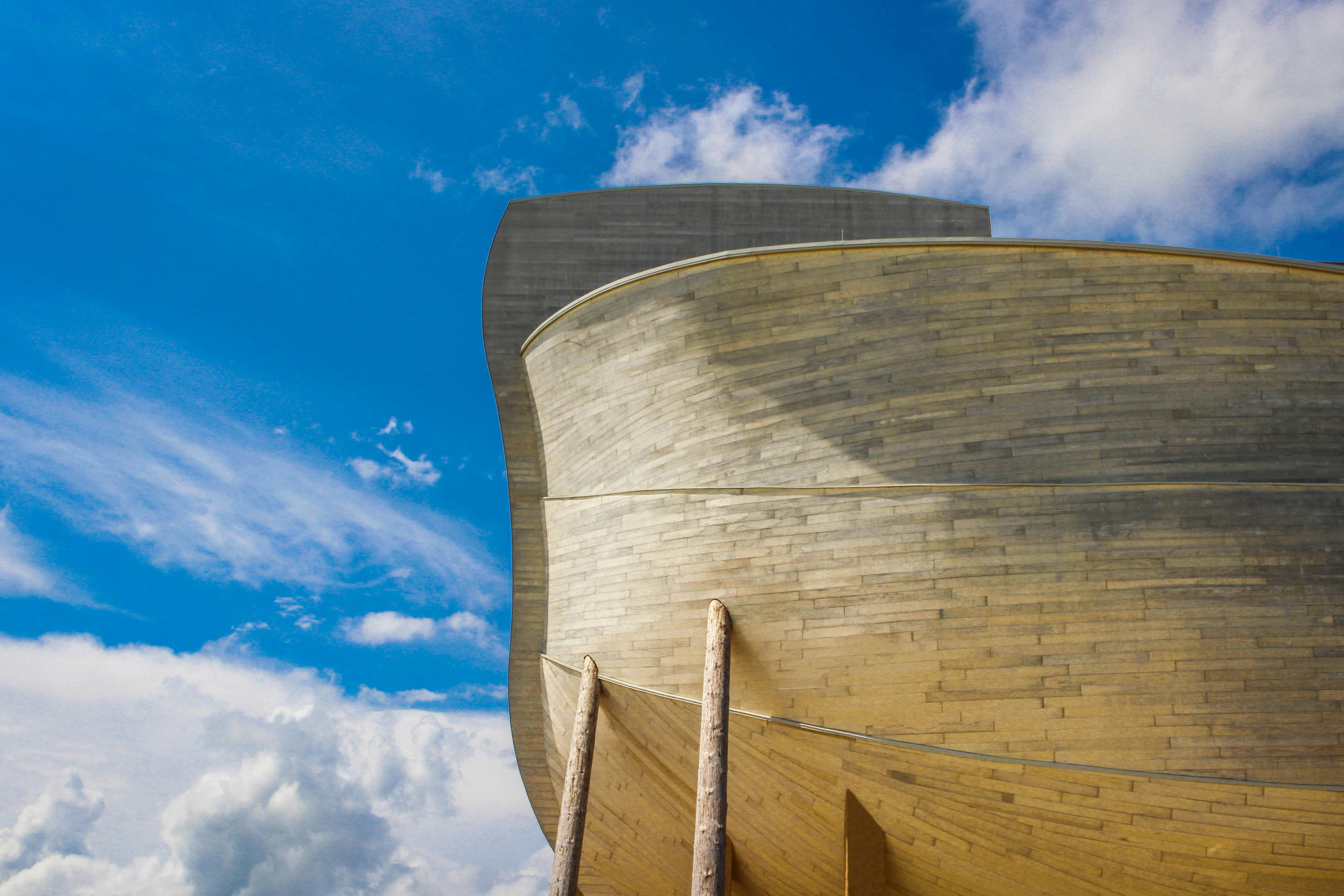As Jerusalem lights up with anticipation, the arrival of the Ark marks a turning point for its people. The journey of the sacred ark to the city symbolizes unity and devotion, bringing the community together in joyous celebration.
In 1 Chronicles 15-16, we see the heartfelt worship and meticulous preparation that come with this momentous event. From David’s leadership to the vibrant music and offerings, every detail highlights the deep reverence and collective enthusiasm that define this historic occasion.
Overview of 1 Chronicles 15-16

1 Chronicles 15-16 narrates King David’s meticulous preparations and joyful celebration as he transports the Ark of the Covenant to Jerusalem. David assembles the Levites, musicians, and priests, ensuring each group understands their specific roles. He organizes movements of sacred instruments, including harps, lyres, and cymbals, to create a harmonious worship atmosphere.
David appoints key leaders like Jeshua and Zadok to oversee the Ark’s journey, emphasizing the importance of reverence and order. Detailed instructions are given for carrying the Ark on new carts, highlighting the commitment to restoring proper worship practices. As the Ark arrives in Jerusalem, the community unites in exuberant praise, offering burnt sacrifices and peace offerings.

A significant moment occurs when David appoints Asaph and his brothers as leaders of the singers, strengthening the musical foundation for worship. The narrative concludes with David’s heartfelt dedication in Psalm 30, expressing gratitude and reaffirming the covenant with God. These chapters illustrate David’s leadership, the community’s devotion, and the foundational role of worship in uniting and strengthening the nation.
Significance of the Ark’s Arrival in Jerusalem
The Ark’s arrival in Jerusalem marked a transformative moment for the Israelite community. It symbolized unity and a collective dedication to their faith. This event underlined Jerusalem’s role as the spiritual center, fostering a sense of identity and purpose among the people.
Centralization of Worship
Bringing the Ark to Jerusalem centralized worship practices, replacing the previous decentralized system. This shift ensured that all sacrifices and ceremonies occurred in one sacred location, enhancing the community’s spiritual cohesion.
- Unified Practices: Consolidated rituals strengthened communal bonds.
- Focused Leadership: King David’s leadership emphasized orderly worship.
- Enhanced Accessibility: Central location made religious practices more accessible to all Israelites.
Strengthening of National Identity
The Ark’s relocation reinforced national identity by uniting diverse tribes under a common religious framework. It served as a tangible reminder of God’s presence and the covenant with Israel.
- Symbol of Covenant: Represented God’s promise to the nation.
- Cultural Identity: Fostered a shared heritage and traditions.
- Political Stability: Strengthened the monarchy’s legitimacy through religious endorsement.
Economic and Social Impact
The event stimulated economic and social growth in Jerusalem. The influx of pilgrims and officials created opportunities for trade and craftsmanship, while social structures evolved to support the growing population.
| Impact Area | Description |
|---|---|
| Economic Growth | Increased trade from pilgrims and visitors. |
| Craftsmanship | Demand for religious artifacts boosted artisans. |
| Social Structures | Development of supporting institutions and services. |
Spiritual Renewal
The Ark’s journey inspired spiritual renewal among the Israelites. The collective worship and sacrifices reinvigorated their faith and commitment to God’s commandments.
- Heightened Reverence: Intensified respect for religious practices.
- Community Reflection: Encouraged collective introspection and repentance.
- Renewed Commitment: Strengthened dedication to following God’s laws.
Leadership and Governance
King David’s role in transporting the Ark showcased his leadership qualities. His meticulous planning and inclusive approach set a standard for governance, emphasizing collaboration and respect for religious traditions.
- Organized Efforts: Demonstrated effective project management skills.
- Inclusive Leadership: Involved various community leaders and groups.
- Visionary Governance: Established a lasting legacy through religious and political integration.
The Ark’s arrival was not merely a religious ceremony but a catalyst for profound societal transformation, reinforcing faith, unity, and identity among the Israelites.
Worship Practices Highlighted in the Passage
Preparations for the Ark’s Movement
King David initiated extensive preparations for relocating the Ark of the Covenant to Jerusalem. He organized twelve Levites, each assigned specific duties to ensure orderly transport. Additionally, seven priests were designated to carry the Ark using newly crafted poles. David coordinated three music teams comprising musicians and singers to lead the procession. Sacred spaces were cleared to accommodate the Ark’s arrival, reflecting the community’s commitment to reverence and precision in worship.
Role of Music and Instruments
Music played a central role in the Ark’s procession, enhancing the worship experience. David appointed Asaph and his three brothers as leaders of the singers, establishing a dedicated group for continuous praise. The Levites utilized twelve types of instruments, including harps, lyres, and cymbals, to create a harmonious soundscape. These instruments were meticulously arranged to support the singers, ensuring that each note contributed to the collective worship. The integration of music and instruments fostered an atmosphere of joy and unity, amplifying the community’s devotion during the celebration.
Celebration and Community Response

The Ark’s arrival sparked widespread joy and unity within the community. Celebrations reflected deep devotion and strengthened social bonds among the Israelites.
Public Participation
The community actively engaged in the festivities, demonstrating their dedication through various forms of worship and offerings.
- Chorus of Praise: Asaph and his brothers led the singing, guiding thousands in hymns and psalms that filled the air with reverence.
- Sacrificial Offerings: People brought burnt sacrifices and peace offerings, highlighting their commitment and respect for the Ark.
- Musical Instruments: Levites played twelve types of instruments, including harps, lyres, and cymbals, adding vibrancy to the celebration.
Leadership and Organization
King David’s leadership ensured the event proceeded with structure and reverence, highlighting his effective governance.
- Appointed Leaders: Jeshua and Zadok oversaw the Ark’s journey, maintaining order and sanctity throughout the procession.
- Defined Roles: Each group, including Levites, musicians, and priests, had clear responsibilities, contributing to a seamless celebration.
- Coordinated Offerings: David organized the sacrificial elements, ensuring that offerings were made timely and appropriately during the festivities.
Theological Implications
The Ark’s arrival in Jerusalem centralizes worship, establishing the city as the religious heart for the Israelites. This centralization fosters spiritual unity, allowing diverse tribes to converge for collective worship. By positioning the Ark in Jerusalem, the narrative underscores God’s presence among the people, reinforcing the covenant relationship.
The event highlights the importance of obedience and reverence in worship practices. King David’s meticulous preparations reflect adherence to divine instructions, demonstrating leadership that prioritizes God’s commandments. This obedience sets a precedent for future generations, emphasizing that proper worship requires both intention and action.
Music plays a crucial role in theological expression during the Ark’s procession. The Levites’ use of twelve instruments, such as harps, lyres, and cymbals, creates a harmonious environment that facilitates genuine worship. This musical arrangement symbolizes the diversity and unity of the community, illustrating how different elements come together to honor God collectively.
The Ark’s procession emphasizes the significance of sacrifice in maintaining the covenant. Burnt offerings and peace offerings underscore the community’s dedication and surrender to God’s will. These sacrifices serve as tangible expressions of faith, reinforcing the theological principle that worship involves both praise and sacrifice.
Leadership within the worship framework demonstrates the necessity of order and structure in religious practices. Appointing Jeshua and Zadok to oversee the Ark’s journey ensures that reverence and protocol are maintained. This structured approach to worship ensures that all participants understand their roles, promoting an organized and respectful environment.
The theological implications of the Ark’s arrival extend to the concept of divine kingship. King David’s role in transporting the Ark signifies his position as both a political and spiritual leader. This dual role exemplifies the integration of faith and governance, illustrating how leadership can be exercised in alignment with divine principles.
Overall, the Ark’s journey to Jerusalem serves as a theological foundation for understanding God’s relationship with the Israelites. It establishes Jerusalem as the central place of worship, reinforces the importance of obedience and proper worship practices, and highlights the roles of leadership and music in fostering a unified spiritual community.
Conclusion

The Ark’s arrival marked a turning point for Jerusalem, bringing the community closer together. Vibrant celebrations and heartfelt worship showed the deep faith and unity among the Israelites. David’s leadership shone as he guided the people with joy and reverence. The integration of music and sacrifice created an atmosphere of praise that resonated with everyone present. This event not only strengthened their spiritual bonds but also set the foundation for Jerusalem as a central place of worship. The legacy of this celebration continues to inspire faith and unity today.












